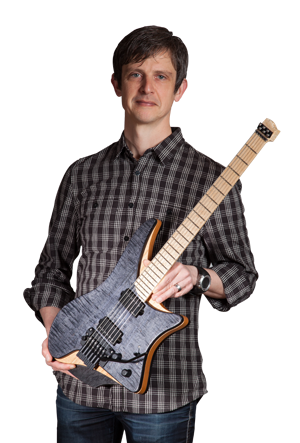I am leaning towards building the bridge in aluminum after all. First of all it will be easier for me to machine. Secondly, I got the new Stewart MacDonald catalog the other day and noticed several bridge parts in both aluminum and composites. I thought that only heavy materials like brass and steel were ever used for their sound qualities, but now I am willing to give it a go. Lastly, it will look good along with the Lace Alumitones that I am planning to use. Here are some sample looks:
If I do go with the aluminum base plate, I would have to go with something like the bottom left design with hardened steel inserts for the fulcrums. Why not make it Floyd Rose drop-in compatible? It would save creating a router template and custom parts for springs, etc.
It shouldn’t be any great news to anyone that a tapered fingerboard radius is superior to an even one. I’ve seen all kinds of radii listed, but decided to put some science to it and prove it to myself which one to go with. A fretboard can be considered as a small slice of a cone like below:
It turns out that starting with a 305 mm (12″) radius and a 42 mm wide fingerboard, matches a 406 mm (16″) radius and a 57 mm wide fingerboard at the 24th fret. This then in turn matches a bridge with a 10,5 mm string spacing, which is what I am planning. Note that the drawing is not to scale – it is just to illustrate the concept.





